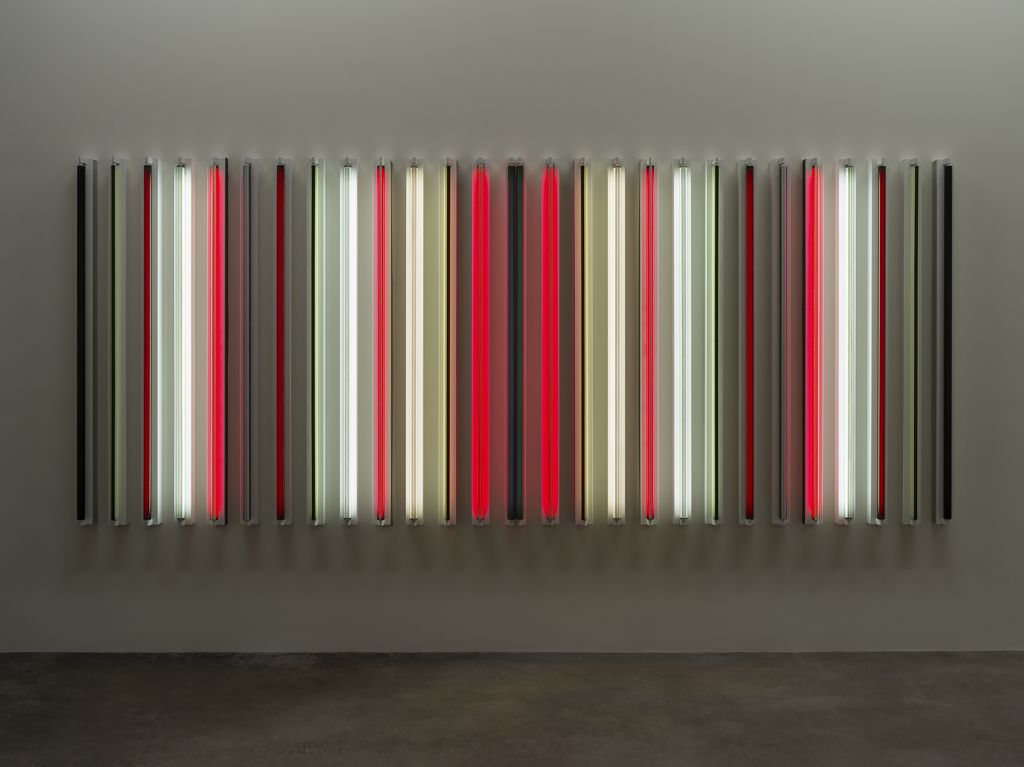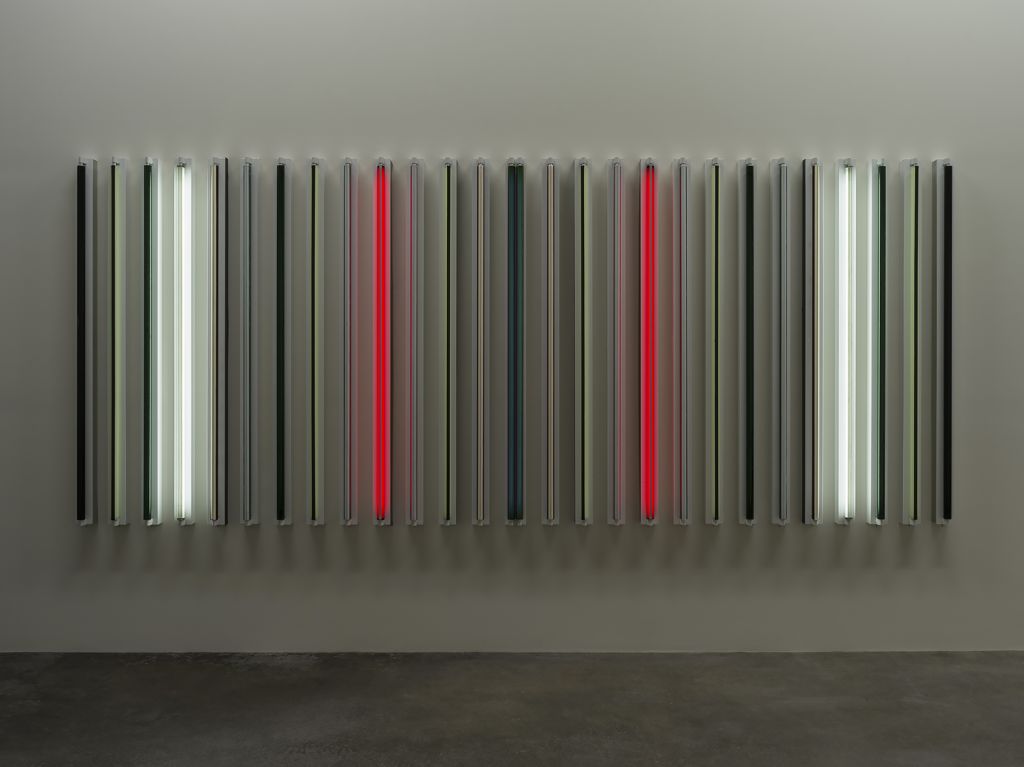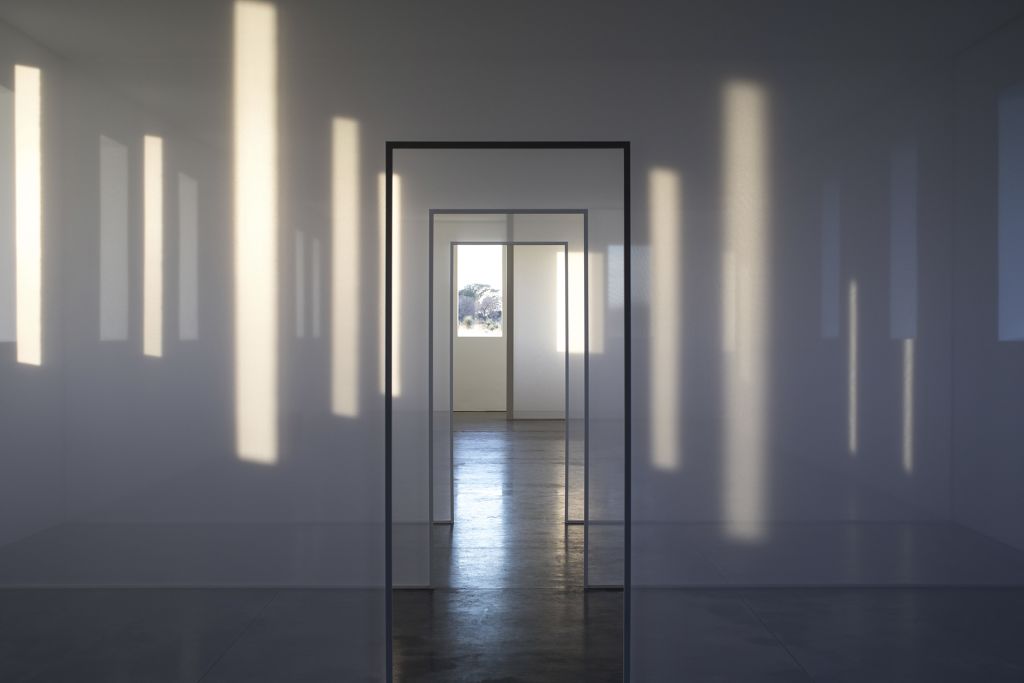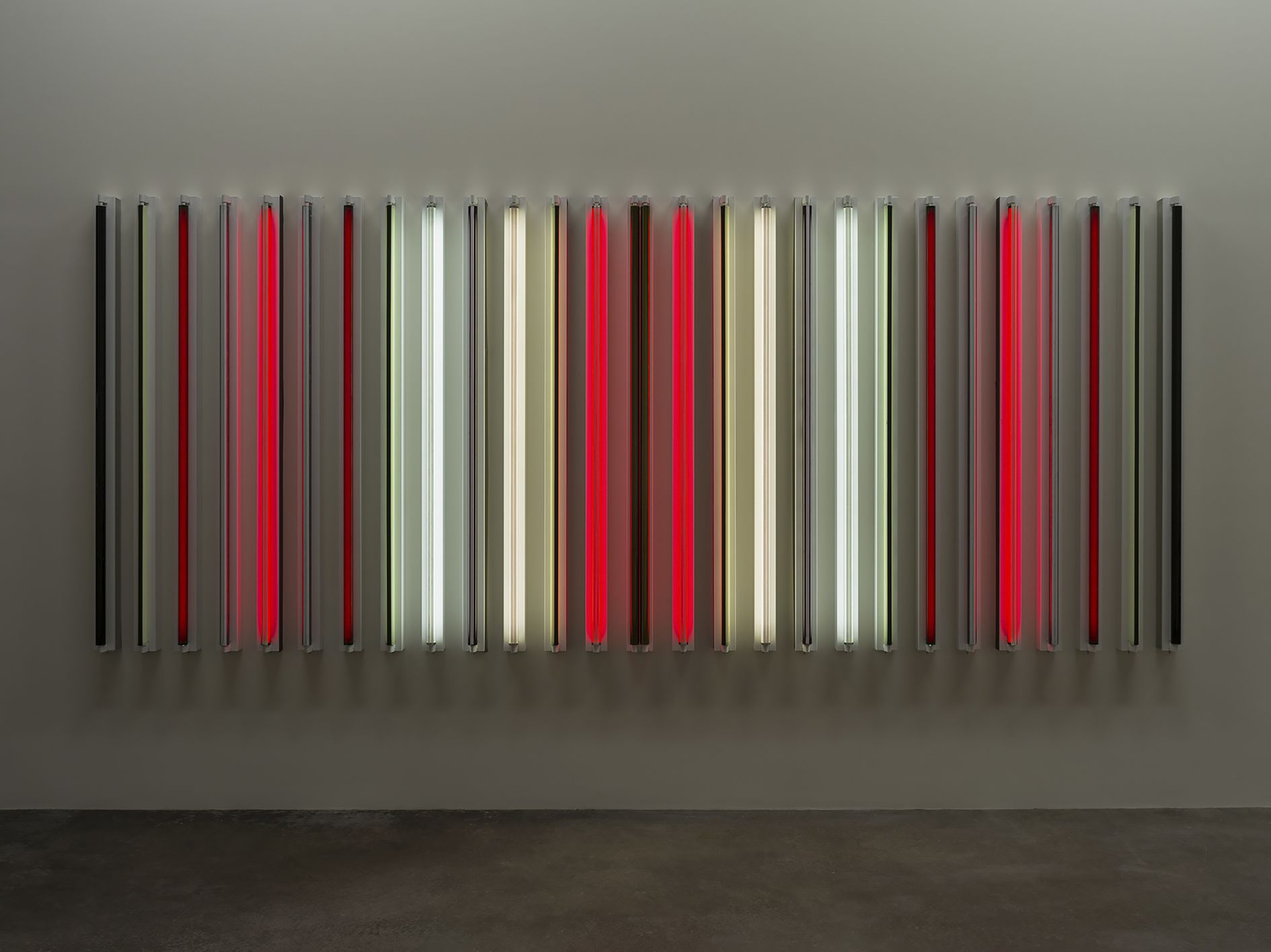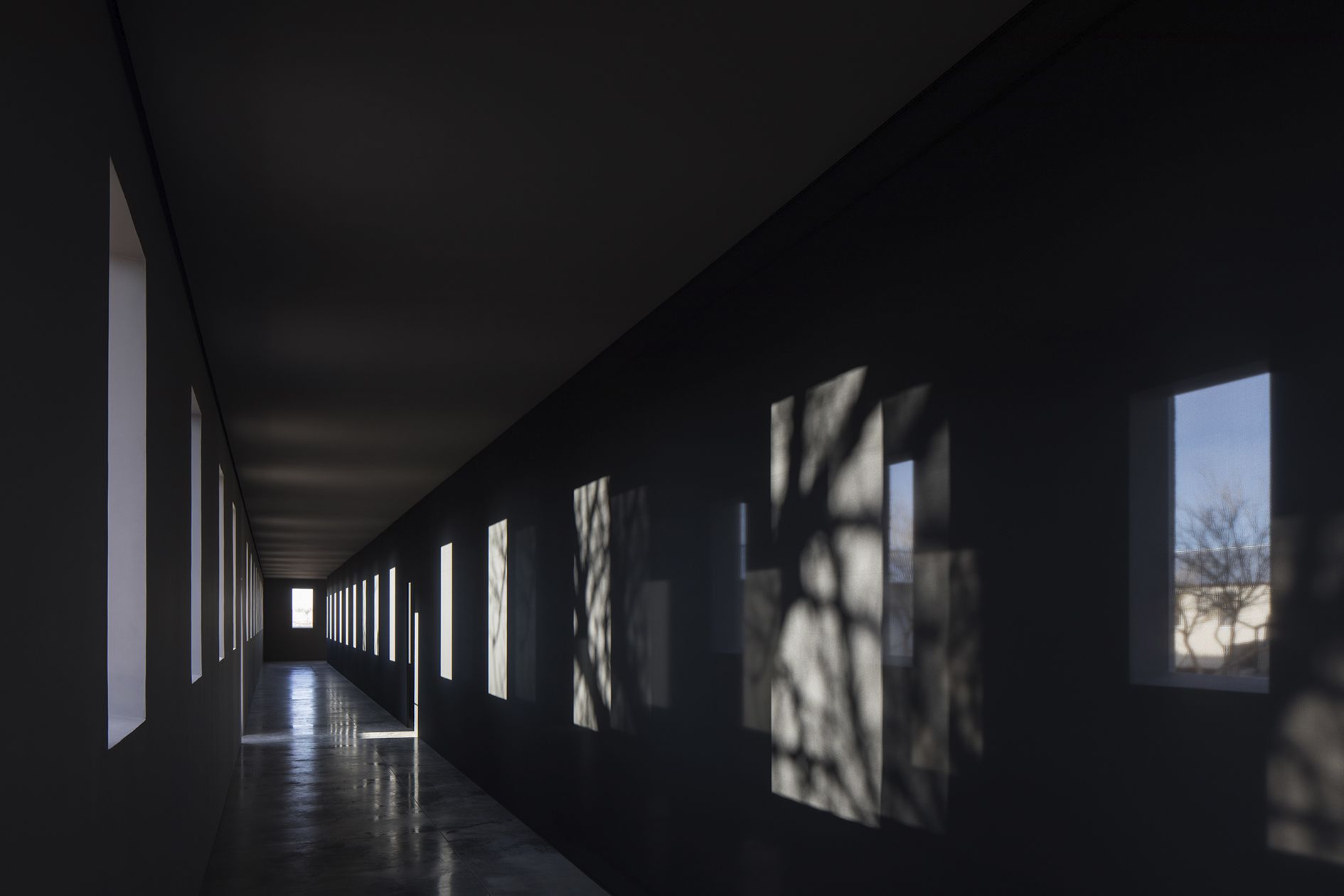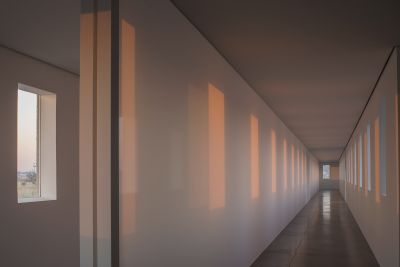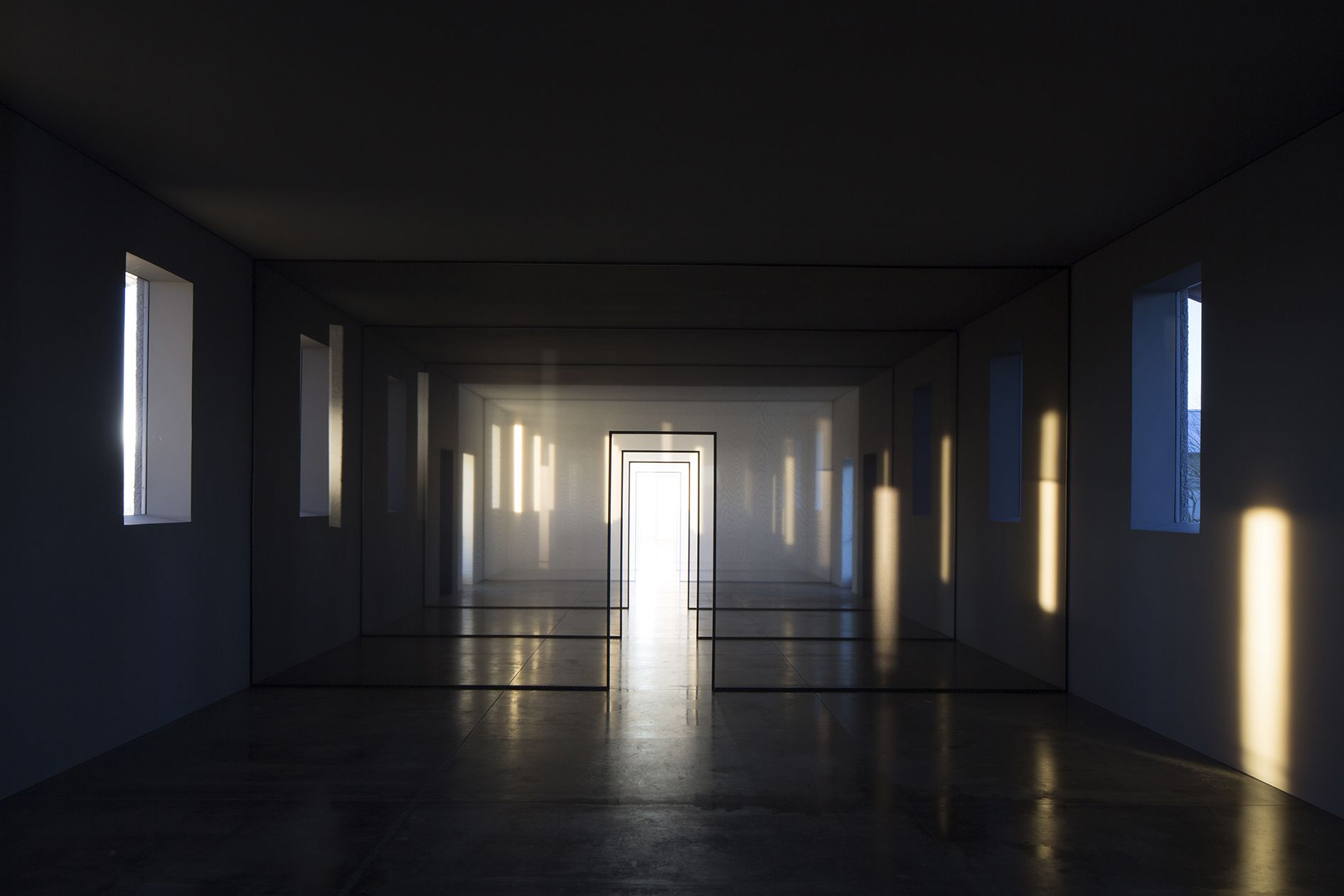Robert Irwin (1928–2023) was one of the most eminent and influential post-war American artists, who, over the course of six decades, developed and refined what he terms “conditional” or “site-conditioned” art. His practice, which is often associated with the California-based Light and Space movement, encompassed painting and sculpture, installations, landscape projects, and interventions in public space. His actual medium was the viewer’s perception itself. The artist’s works dissolve conventional modes of reception to enable new forms of individual experience and an awareness of the aesthetic potential of our everyday surroundings.

Pinault Collection. Photo: Pedro Pape © Projeto Lygia Pape
Minimal
Group Exhibition with Nancy Holt, Robert Irwin, Donald Judd, David Lamelas, Senga Nengudi and Bridget Riley
Bourse de Commerce, Paris
Through January 18, 2026
Bringing together an exceptional group of works from the Pinault Collection in dialogue with those of prestigious collections, Minimal traces the diversity of this movement since the 1960s, when a whole generation of artists (Dan Flavin, Robert Ryman, On Kawara, Agnes Martin, François Morellet, among others) initiated a radical approach to art. This exhibition is curated by Jessica Morgan, director of Dia Art Foundation (New York), who has selected over a hundred works by some forty international artists, including Nancy Holt, Robert Irwin, Donald Judd, David Lamelas, Senga Nengudi and Bridget Riley.
Learn more

